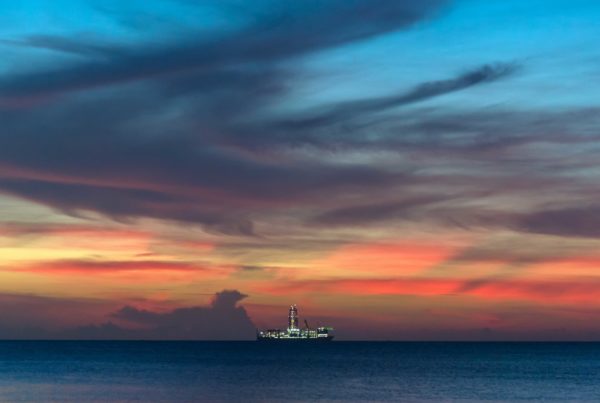Sustained Low Oil Price Sinks Deepwater Projects, 2016-2020 Deepwater Spend to Total $137 Billion
Douglas-Westwood (DW) forecasts deepwater expenditure to total $137 billion (bn) between 2016 and 2020. This represents a 35% decline compared to DW’s previous edition of the deepwater forecast, covering the 2015-2019 period and issued at the end of March 2015. Report author, Mark Adeosun, commented, “The prolonged low oil price has impacted the deepwater market, with operators considering alternative development options and delaying the sanctioning of new projects. Compared to the same point last year – where we saw 210 potential projects visible for installation in the coming five-year period – we now expect 118 projects to be installed 2016-2020.
“Expenditure will predominantly be driven by Africa and the Americas, which will account for a combined 87% of total deepwater Capex. Though all regions will be adversely affected by low oil prices, in the near-term, projects that were sanctioned before the oil price downturn and the development of East African gas basins will ensure these regions remain key deepwater hubs.
“Despite the corruption scandal and the huge financial difficulties rocking Petrobras, Latin America will retain the largest share of deepwater Capex, due to Petrobras’ continued development of the pre-salt basins off Brazil. However, Brazil’s senate recently approved legislation (relieving the NOC of its role as sole operator and mandatory stakeholder in its pre-salt deepwater fields) highlights the risk posed by sustained low oil prices. The downturn has further delayed the sanctioning of significant projects in West Africa, including but not limited to Shell’s Bonga South West-Aparo, and Chevron’s Nsiko development.”
Research Director and Editor, Steve Robertson, further commented, “To date, subsea hardware manufacturers have been somewhat insulated from the downturn due to record levels of backlog established over the 2011-2014 period. However, we expect a further decline in subsea hardware installations in 2017 and 2018 with backlog falling rapidly and new orders trickling in at very low levels. As a result, we expect that the subsea OEM’s will feel the full impact of the downturn in 2016 and will have a very difficult year.
“A total of $38bn is forecast to be spent on the installation of deepwater FPS units over the next five years. However, 82% of FPS units forecast to be installed over 2016-2020 have already been sanctioned; this underlines how much is weighing on projects that have passed the FID stage. Last year (2015) saw the lowest number of deepwater FPS units ordered since 1996. Ultimately, 2016 will be a challenging year for the oilfield service and equipment market, with many firms focused simply on positioning and survival through the downturn. There are however opportunities at this point in the cycle to bring through new approaches and technology for deepwater development to improve efficiency and lower cost. In the long run, we remain of the view that deepwater will be a cost competitive source of world-class hydrocarbon reserves.
Sustained Low Oil Price Sinks Deepwater Projects, 2016-2020 Deepwater Spend to Total $137 Billion


